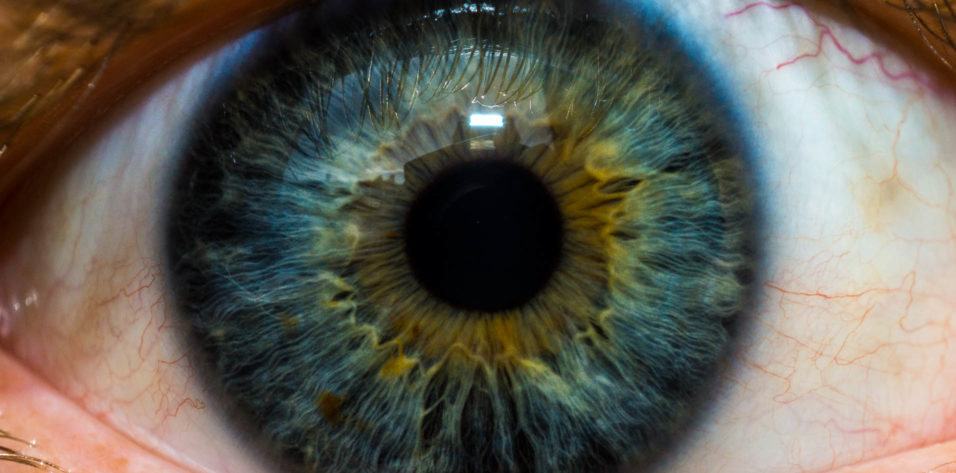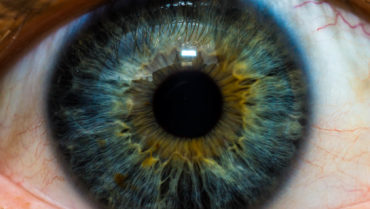

Corneal Biomechanics: Measurement and Structural Correlations
Chong J, Dupps WJ Jr1
Industry support: No
ABSTRACT SUMMARY
Chong and Dupps analyzed in detail in vivo techniques for the assessment of corneal biomechanical properties. This analysis allowed the physiologically normal cornea to be characterized; information regarding the pathogenesis, prevention, and management of ectatic disease to be gathered; and the results of surgeries such as CXL that change corneal stiffness to be assessed.
Study in Brief
A review study analyzed multiple methodologies available to assess corneal biomechanics in vivo. The investigators stress the differences among the approaches, describe their advantages and limitations, and explain how each technique has helped to broaden ophthalmologists’ understanding of corneal behavior, function, and response to surgical intervention.
WHY IT MATTERS
Corneal refractive surgery and corneal diseases such as keratoconus can significantly change the optical properties of the cornea. An ongoing challenge is to elucidate the relationship between the mechanical and structural changes that produce clinically measurable optical modifications and their evolution over time. A better understanding of corneal biomechanics is thus essential to comprehending the consequences of alterations in corneal geometry after excimer laser refractive surgery or nonablative interventions such as CXL. This information could improve the diagnosis and management of ectatic corneal disorders such as keratoconus and shed light on the biomechanics of IOP.7
Devices such as the Ocular Response Analyzer (ORA, Reichert) and the Corvis ST (Oculus Optikgeräte) emit an air puff to perturb the cornea and assess biomechanical responses. The use of these technologies has expanded ophthalmologists’ understanding of the behavior of the cornea after it is perturbed by an external source. Imaging devices are expanding this understanding by analyzing focal properties in up to 3D space and pointing to a future when more advanced biomechanical analysis can support more individualized medical decision-making.
DISCUSSION
Multiple methodologies have been developed during the past few years to assess corneal biomechanics, but many of these rely on destructive ex vivo testing. Much of the information on corneal biomechanics that has been gathered comes from these studies. Research efforts, however, have shifted toward using techniques that can accurately describe biomechanical properties in vivo.2
Chong and Dupps analyzed many different technologies—both clinically available devices such as the ORA and Corvis ST and emerging techniques such as OCT elastography and Brillouin microscopy. Whereas the ORA and the Corvis ST use an air puff to disturb the cornea, OCT elastography and Brillouin microscopy offer nonperturbatory methods based on intrinsic corneal thermodynamic properties to identify structural and mechanical characteristics. In their own ways, OCT elastography and Brillouin microscopy both rely upon the scattering behavior of incident light to assess the properties of biological tissues.3,4 OCT elastography can also be used with perturbatory methods, either by applanating the cornea or using microscale air puffs.5,6
Chong and Dupps stress the importance of assessing corneal biomechanics in vivo. Analyzing the cornea in 3D and detecting focal changes in this tissue are key to broadening ophthalmologists’ understanding of the structure and function of the cornea. This information has the potential to allow earlier detection of and intervention for ectatic disorders and more accurate assessment of refractive surgery risk and customization of surgical planning.
Reliability Analysis of Successive Corneal Visualization Scheimpflug Technology Measurements in Different Keratoconus Stages
Flockerzi E, Häfner L, Xanthopoulou K, et al8
Industry support: No
ABSTRACT SUMMARY
Flockerzi et al compared the reliability of measurements obtained with the Corvis ST for different stages of keratoconus. Repeated measurements were taken of 158 keratoconic corneas with the Corvis ST and the Pentacam (Oculus Optikgeräte). Participants were divided into groups based on their topographic keratoconus (TKC) staging with the Pentacam. A groupwise comparison of the biomechanical indices provided by the Corvis was performed. A matched control group was added to the analysis.
Study in Brief
A study analyzed the reliability of corneal biomechanical response measurements obtained with the Corvis ST (Oculus Optikgeräte) in various stages of keratoconus. The quantitative difference among groups was also investigated, and most variables differed significantly between groups. The exception was the Corvis Biomechanical Index, which showed high variability in the early stages of keratoconus and was unable to discern early disease from controls.
WHY IT MATTERS
The Corvis ST is one of the commercially available devices that can produce a biomechanical analysis of the cornea in vivo. The widespread adoption of this device worldwide makes it crucial to understand its capabilities and limitations. Further, it is important for clinicians to recognize that a single variable or analysis cannot distinguish between normal corneas and those with early keratoconus. A holistic view—including a comprehensive medical and family history, clinical examination, and multiple examination techniques—is required to make a safe and evidence-based decision in these challenging cases.
The investigators found that the Corvis produced repeatable individual measurements among each stage of keratoconus. The isolated parameters related to the dynamic corneal response to an air puff (A1 velocity, deformation amplitude ratio 2 mm, integrated radius, stiffness parameter A1, and Ambrósio relational thickness to the horizontal profile) were different in each group. The Corvis Biomechanical Index (CBI), which comprises all of these parameters, showed a wide range of values in the early stages (TKC classifications TKC 1 and TKC 1-2) of disease. The Total Biomechanical Index, which aggregates tomographic variables along with the CBI, was different from the control group at every disease stage. The tomographic variables analyzed before and after the Corvis examination were not statistically significantly different in any group assessed.
DISCUSSION
The Corvis ST uses an ultrahigh-speed Scheimpflug camera combined with a noncontact tonometer. After a standardized air puff indentation, the device visualizes and measures the corneal deformation response. Many studies have validated the use of this device in different scenarios.9,10 Questions remain, however, regarding its use for refractive surgery screening, especially for forme fruste keratoconus.11
As highlighted by Chong and Dupps,1 an understanding of corneal biomechanics is key to providing individualized care in corneal and refractive surgery. An ability to obtain reliable measurements in patients with keratoconus is essential to screenings and surgical planning. Flockerzi et al provided solid evidence that most parameters produced by the Corvis are reliable, even when keratoconus reaches an advanced stage.8 Based on the findings of this study, however, practitioners should be careful when analyzing the CBI because it showed high variability as a standalone metric in early keratoconus.
Another interesting feature of this study is that the tomography evaluation did not change immediately after a patient underwent a Corvis examination. In other words, the stress applied to the cornea by the device did not appear to alter the corneal shape, suggesting that greater flexibility in clinic flow may be possible.
1. Chong J, Dupps WJ Jr. Corneal biomechanics: measurement and structural correlations. Exp Eye Res. 2021;205:108508.
2. De Stefano VS, Dupps WJ Jr. Biomechanical diagnostics of the cornea. Int Ophthalmol Clin. 2017;57(3):75-86.
3. Scarcelli G, Yun SH. Confocal Brillouin microscopy for three-dimensional mechanical imaging. Nat Photonics. 2007;2:39-43.
4. Blackburn B, Gu S, Ford M, et al. Noninvasive assessment of corneal crosslinking with phase-decorrelation OCT. Invest Opthalmol Vis Sci. 2019;60(1):41-51.
5. De Stefano VS, Ford MR, Seven I, Dupps WJ Jr. Live human assessment of depth-dependent corneal displacements with swept-source optical coherence elastography. PLoS One. 2018;13(12):e0209480.
6. Wang S, Larin KV, Li J, et al. A focused air-pulse system for optical-coherence-tomography-based measurements of tissue elasticity. Laser Phys Lett. 2013;10(7):1-6.
7. Piñero DP, Alcón N. Corneal biomechanics: a review. Clin Exp Optom. 2015;98(2):107-116.
8. Flockerzi E, Häfner L, Xanthopoulou K, et al. Reliability analysis of successive Corneal Visualization Scheimpflug Technology measurements in different keratoconus stages. Acta Ophthalmol. Published online March 22, 2021. doi:10.1111/aos.14857
9. Ambrósio R Jr, Lopes BT, Faria-Correia F, et al. Integration of Scheimpflug-based corneal tomography and biomechanical assessments for enhancing ectasia detection. J Refract Surg. 2017;33(7):434-443.
10. Vinciguerra R, Ambrósio R Jr, Roberts CJ, Azzolini C, Vinciguerra P. Biomechanical characterization of subclinical keratoconus without topographic or tomographic abnormalities. J Refract Surg. 2017;33(6):399-407.
11. Guo LL, Tian L, Cao K, et al. Comparison of the morphological and biomechanical characteristics of keratoconus, forme fruste keratoconus, and normal corneas. Semin Ophthalmol. Published online March 18, 2021. doi:10.1080/08820538.2021.1896752




